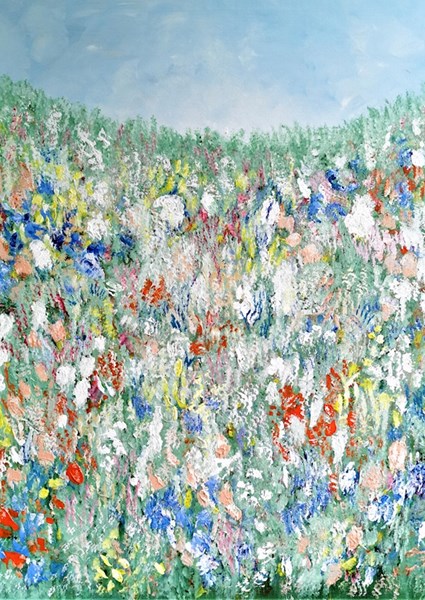¿Qué es el arte abstracto?

El concepto de arte abstracto puede que no sea inmediatamente comprensible para todos. Pero cuando lo miras, te das cuenta de que se trata de: "Algo intangible". Sí, entonces, ¿qué es arte abstracto?
Es arte que no representa nada. Y al mismo tiempo, arte que representa todo. Un arte que nos permite fantasear, soñar y sentir. En este artículo, explicaremos el arte abstracto de una manera sencilla. ¿Qué expresa el arte abstracto? ¿Cuándo es una imagen abstracta? También preguntamos a algunos de nuestros artistas favoritos, para que tú también puedas pintar arte abstracto tú mismo... Y quizás incluso venderlo como posters con nosotros pronto, como Sofia Larsson y Birgit Anhede Eriksson.

What is abstract art?
Translated from Latin, abstract means “to derive the essential features from something concrete”. Humans have the ability to think abstractly: Thoughts and feelings can be replaced by an image in our head - without us ever having seen that image before.
There is no conclusion, no right or wrong. It is therefore typical of abstract art that the work does not represent anything concrete, but that meaning is only given to the image when it is interpreted by the viewer's eye and mind. An abstract painting therefore usually has as many different meanings as the number of people that are looking at the painting. You can discover great examples in our abstract art gallery.
VENTA
VENTA

When is an image abstract?
Our amazing artist Sofia Larsson explains abstract art simply with one apt quote: “Art is in the eye of the beholder”. Larsson goes on to describe it as “a wonderful blend of colour and form that allows the viewer to choose what to see”. What makes a good abstract painting? In her opinion, there are no rules, but it is personally important to her that there is a contrast that literally draws the viewer's eye. That the colours create harmony, but at the same time stand out and give character to a room. These traits are actually represented very wel in her own abstract artworks.
Birgit Anhede Eriksson, another one of our artists, also has a great talent for abstract art. In her online gallery at Printler, you will find wonderfully dreamy motifs that appear as if they have been inspired by nature itself. Eriksson's paintings are rarely named, a conscious step she took to allow the viewer's imagination to flow freely, free from the sway of labels. Only colour and form are given the power to be effective. Anyone looking at Eriksson's art should be able to read different things in the paintings based on their own thoughts and experiences.

How to paint abstract art yourself?
The answer to this question, how to paint abstract paintings yourself, is about as diverse as the answer to the question what abstract art is. There are no rules or real guidelines - the artist can create something out of pure emotion or ideas, but can just as easily be inspired by reality-based scenes. Many abstract works of art originate, for example, from images of nature or still lifes, which the artist then freely interprets and adds a personal touch to.

Tips from abstract artists
In most of the abstract paintings in Birgit Anhede Eriksson's gallery we can discern underlying natural motifs, although the boundary between sea and sky is often left open to interpretation. She paints with acrylics and uses both bold colours and earthy tones. She herself says that the idea behind some artworks is quite simple: the colour and form of the painting should blend in with the interior design in terms of style and colour. Other times she wants to convey a feeling.
Sofia Larsson also paints her abstract art with acrylic paints. Easy to handle, acrylic can be easily removed, painted over and applied layer by layer to create a unique texture on the canvas. Larsson also thinks oil paintings are great, but she says she has little patience and wants to express herself faster – the long drying time of oil paint doesn’t suit her so well… She also tested mixed media, i.e. a mixture of acrylic and oil, but for hers abstract works of art, she is particularly attracted to diluted acrylic paint. She likes to mix her paint herself and works with the components acrylic, wood glue, water and what is known as pouring: Here the consistency is changed so that the paint is more viscous but still easier to work with.
Sofia has a very special approach when creating abstract art - she pours the colours on the canvas, either side by side or on top of each other, and then blows them out with her mouth or a hair dryer so that the colours flow together in the chosen direction. "It's usually a very messy process and often reflects how I'm feeling right now." Stains and colour everywhere. Since I mostly take larger pictures, I'm often literally sitting in paint. I've ruined quite a few of my clothes that way (laughs). But the result of this technique is almost always a gorgeous, shiny mix of colours that's impossible to dream of is to paint by hand."







